Background
This month's been a whirlwind in the best way possible.
From building cool stuff at the AITX hackathon to taking in the SXSW vibes, I've got some fun updates and takeaways to pass along.
AITX Hackathon
Our team received the Llama track prize at the AITX Hackathon for our project that utilized Meta's open-source LLAMA model. The details on how we used the LLAMA are discussed later in this article.
I worked alongside my brother, Pranav, and my college friend, Zanir. Initially, I had hoped it would simply be a weekend productively spent learning how to use state-of-the-art tools and models in AI. But we ended up exceeding my expectations with our win.
The Problem
While we were brainstorming hackathon project ideas, Zanir casually mentioned that he was thinking about ways to utilize his free time to absorb more knowledge in the form of podcasts tailored to a specific topic of his choosing. As we bounced ideas around, my brother Pranav, who has always had a deep passion for healthcare innovation, floated the idea of creating podcasts to help physicians keep up with the latest research.
After doing some research, the issue became clear: physicians today are drowning in research. With thousands of new medical papers published daily, even the most dedicated doctors struggle to stay current in their specialties. The demanding nature of clinical practice leaves little time for reading dense academic literature.
The Solution
We developed an application called Medicast that converts complex medical research papers (medrxiv) into engaging podcast-style audio content. Our tool allows physicians to absorb the latest findings during their commutes, workouts, or any other time when reading isn't practical. We hope Medicast helps bridge the gap between cutting-edge research and clinical practice.
Here’s how we built it:
Frontend
We used React Native with Expo to create the demo. We are currently transitioning the frontend to SwiftUI partly get native performance … but mostly because we dislike writing JavaScript.
Backend
We used the following APIs to generate the podcasts:
LLAMA-3.3-70B on Groq Cloud for generating the podcast summaries
Firecrawl for retrieving the full text of preprint papers
ElevenLabs for text-to-speech
Podcasts are stored as mp3 files in AWS S3.
We plan to host our API’s on AWS Lambda and API Gateway. We’re also planning on releasing an API for generating podcasts hosted by 2 AI hosts who discuss any topic you choose.
We’re using the serverless framework to deploy our cloud resources using infrastructure-as-code, which is a best practice. I set up a Github actions file to run the sls deploy command when a pull request is merged into the main git branch.
Highlight Reel
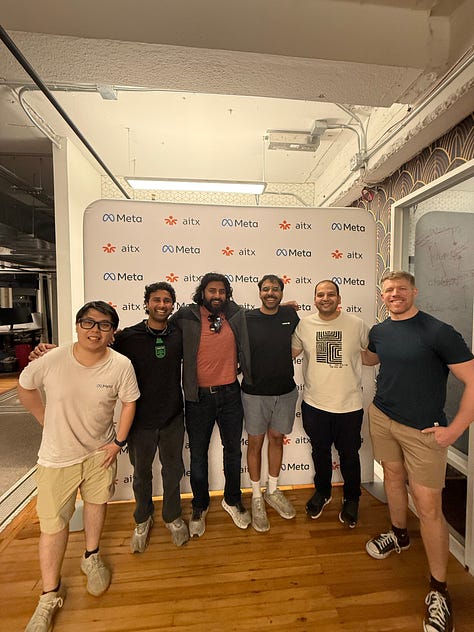
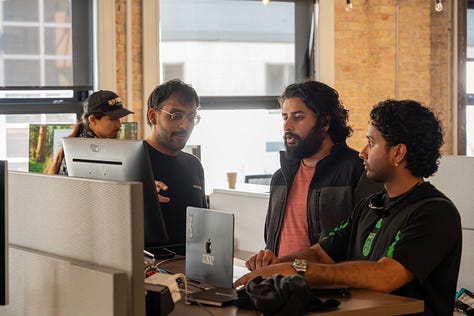
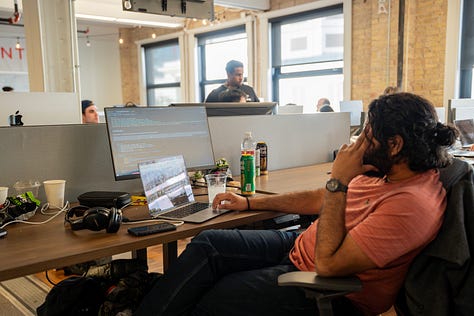
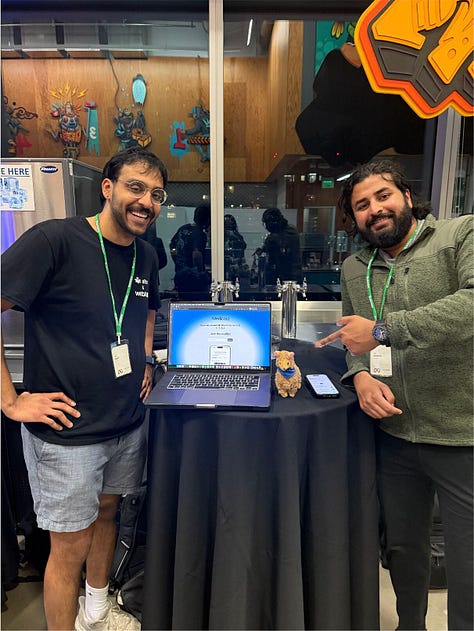
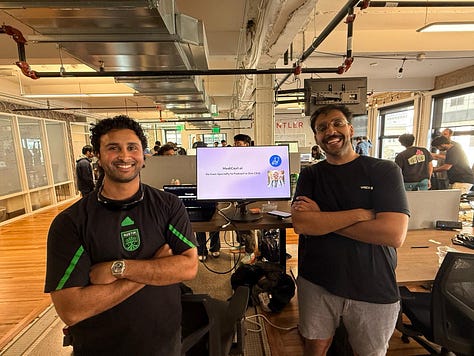
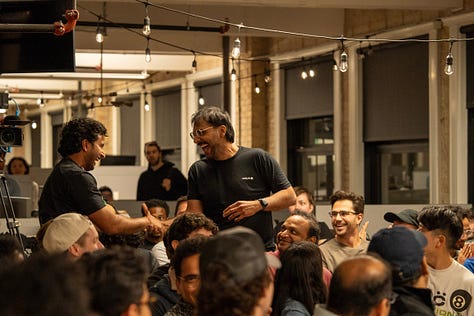
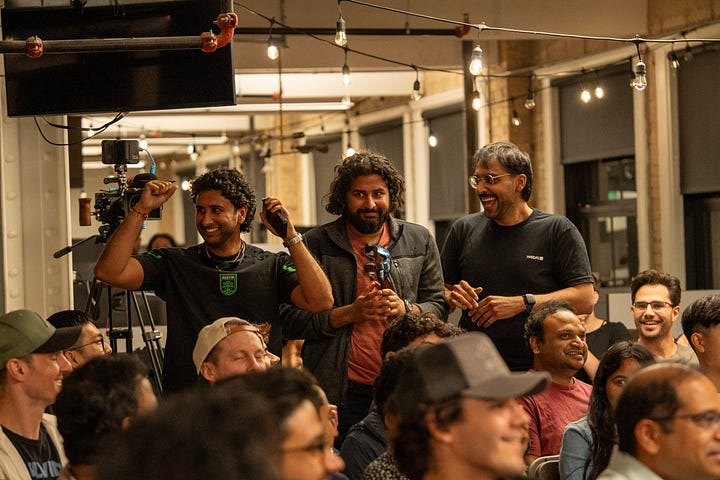
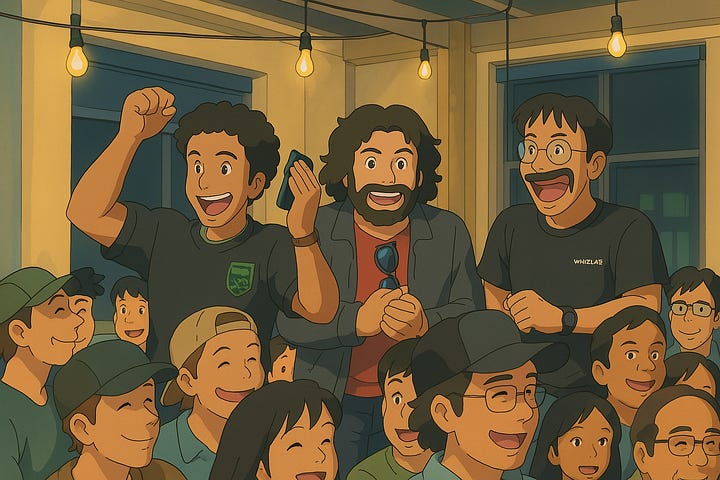
Future Directions
We were invited to demo Medicast at the Meta for Education event during SXSW. Our next step is shipping it and putting it in the hands of physicians.
Extending it for academics (biorxiv) - I have to summarize new papers for BiB newsletter so I would personally love a podcasts focused on the intersection of biology and AI.
Creating evals for different model performance on summary generation — how can we evaluate how accurately and succinctly different foundation models summarize papers while also condensing the key insights from a paper?
SXSW
I usually get out of town during SXSW because the traffic is terrible, and the city becomes a zoo. Last year, I went on an RV trip with my family to Joshua Tree to decompress a bit and having fun at a national park was a nice contrast to the craziness I imagined Austin to be during SXSW.
But this year, I had no plans, and I had a great time this last month attending many different events and even hosting a few myself.
Austin 4 America
SXSW-Adjacent Conference: The event operated separately from the main SXSW conference and was hosted in a repurposed warehouse space.
Business Development Focus: I attended specifically to identify potential consulting opportunities. Many participating startups were active SBIR grant recipients and applicants and I’m hoping we get to work with some of them down the line.
Defense Startup Showcase: The conference featured primarily defense-focused startups alongside established companies demonstrating their technologies and capabilities. My favorite demo was from webAI, who built a cluster of Mac Mini’s with Apple Silicon to run AI models.
AI House (hosted by Antler)
Local Builder Network: I dropped by in the afternoon to learn from other AI developers and entrepreneurs in Austin. I was excited to learn about efforts to design AI accelerators and get a crash course in the engineering tradeoffs for AI chip design.
Demo from SambaNova Systems:
SambaNova presented their chip design philosophy for the SN40L with a reconfigurable data unit (RDU).
Our discussion also encompassed their business strategy win over developers with SambaNova Cloud, their inference offering, and their engineers presented data on how they compare to other inference providers.
Key takeaway: AI Inference is a race to the bottom
The real money comes from selling complete racks for on-premises. I had been wondering for a while why SambaNova doesn’t sell the chips, but I guess by selling the racks they are effectively doing this. I bet it's similar to how Nvidia doesn't just sell GPUs but an entire infra solution for hyperscalers to deploy in data centers – I suspect the margins are a lot juicier for selling AI server racks paired with a recurring service contract.
I’m looking forward to when they eventually enable users to host custom models—this is likely challenging as they probably need to develop or are likely already using an in-house alternative to CUDA
Tectonic Defense Summit
Provocative Panel Discussions: I came away from the conference feeling that panelists are pushed by the conference organizers to say inflammatory things. Some panelists said war with China is imminent, others think it's unrealistic. Such a wide disparity - I had no clue which outcome was more likely after the panel.
But other panels revealed some interesting insights:
Key takeaway: America’s security levers to utilize its power
Diplomatic
Information
Economic
Military
Key takeaway: A strategic framework for Defense Tech startups
Frank Finelli, Senior Advisor at Carlyle Group, outlined challenges that Defense Tech Startups need to consider:
Contracts → Revenue - VCs don't really understand contracts; R&D differs from procurement contracts, making transition difficult
Strategy for winning prime contracts
Supply chain risks in China
Software considerations:
Who is the contracting officer? Identifying the right person with purchasing authority is critical.
Who certifies software? Startups need to understand the specific certification requirements needed for your product to be deployed
If they purchase your software, whose do they get rid of? You can't be additive to program costs.
What are the downstream effects of using your software? Consider integration costs, training requirements, and maintenance implications
Exits in VC-funded ecosystem:
Valuation implications: tech-companies can high revenue multiples but markets may not value defense tech system integrators the same way
Lack of venture credit
Defense Tech Innovation: I learned about what people are working on for defense tech... including reinforcement learning for autonomous drone fleets, Bayesian networks for predicting failures of V-22 Osprey's, and hypersonic flight.
"Networking": Is connecting on LinkedIn just a way to feel like we got something out of the conversation? I don't even know off the top of my head who I've connected with on LinkedIn over the years…and I don’t even have that many connections!
I wonder if anyone's working on a better platform—hopefully one that can remind me who to follow up with after the conference is over and the context of our conversation.
DeepTech Co-working at Antler
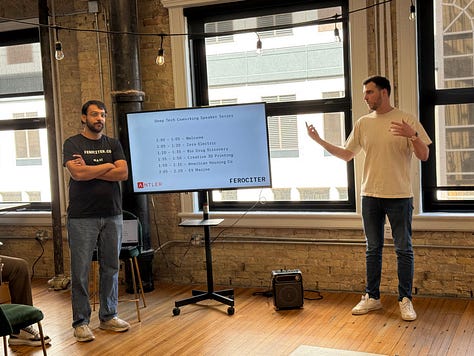
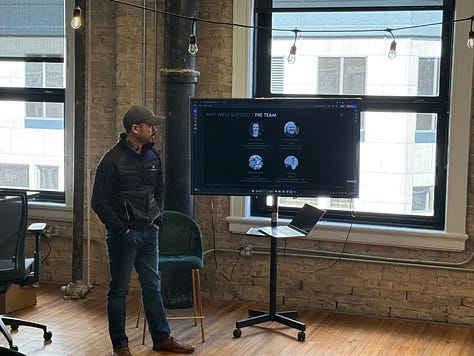

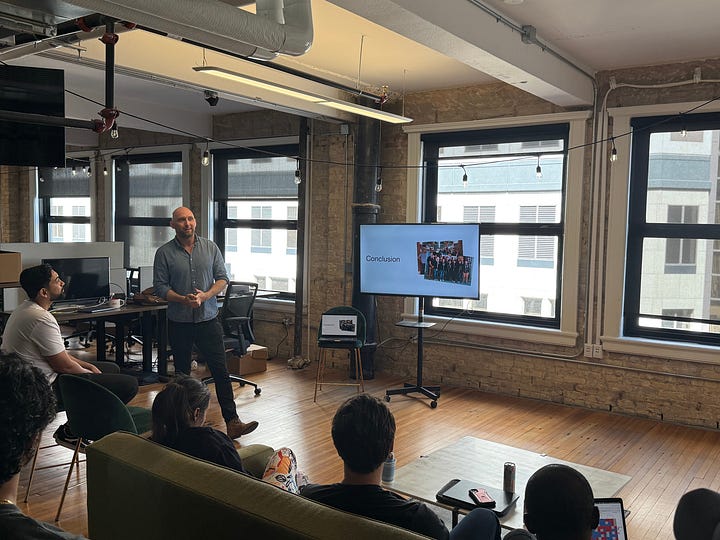
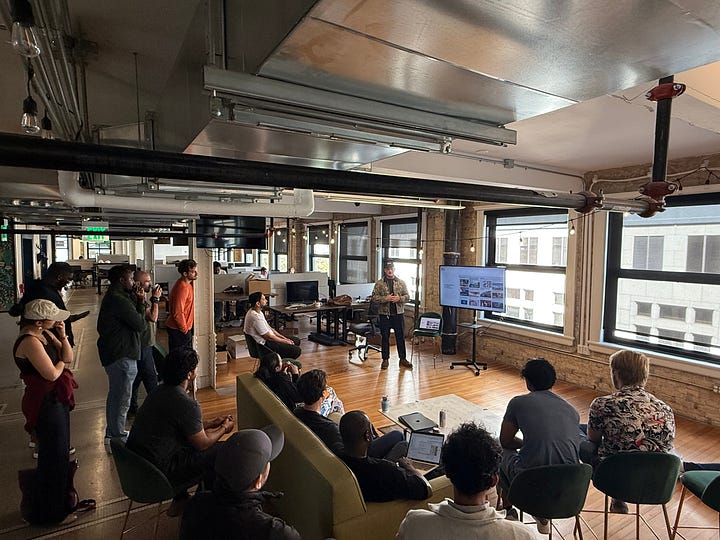
Series Organization: The series featured introductions from Zanir Habib and Jake O’Shea, a principal at Antler venture firm in Austin, TX.
Founder Focus: We hosted a series centered on DeepTech founders—typically defined as involving hardware or significant scientific/engineering innovation.
Jimi and Felix from Zero Electric
Riley from American Housing Corporation
Conor Warnock from Notable Labs
Richard from Voltaic Marine
Virtual Lab Tour: A business development representative from Emerald Cloud Labs gave a virtual tour of their facility featuring robots that perform lab experiments.
Engineering Foundations: It was refreshing to see startups with traditional engineering disciplines at their core. I feel that tech news is saturated with B2B AI startups, so the variety at the DeepTech co-working day was inspiring.
Bits in Bio Happy Hour
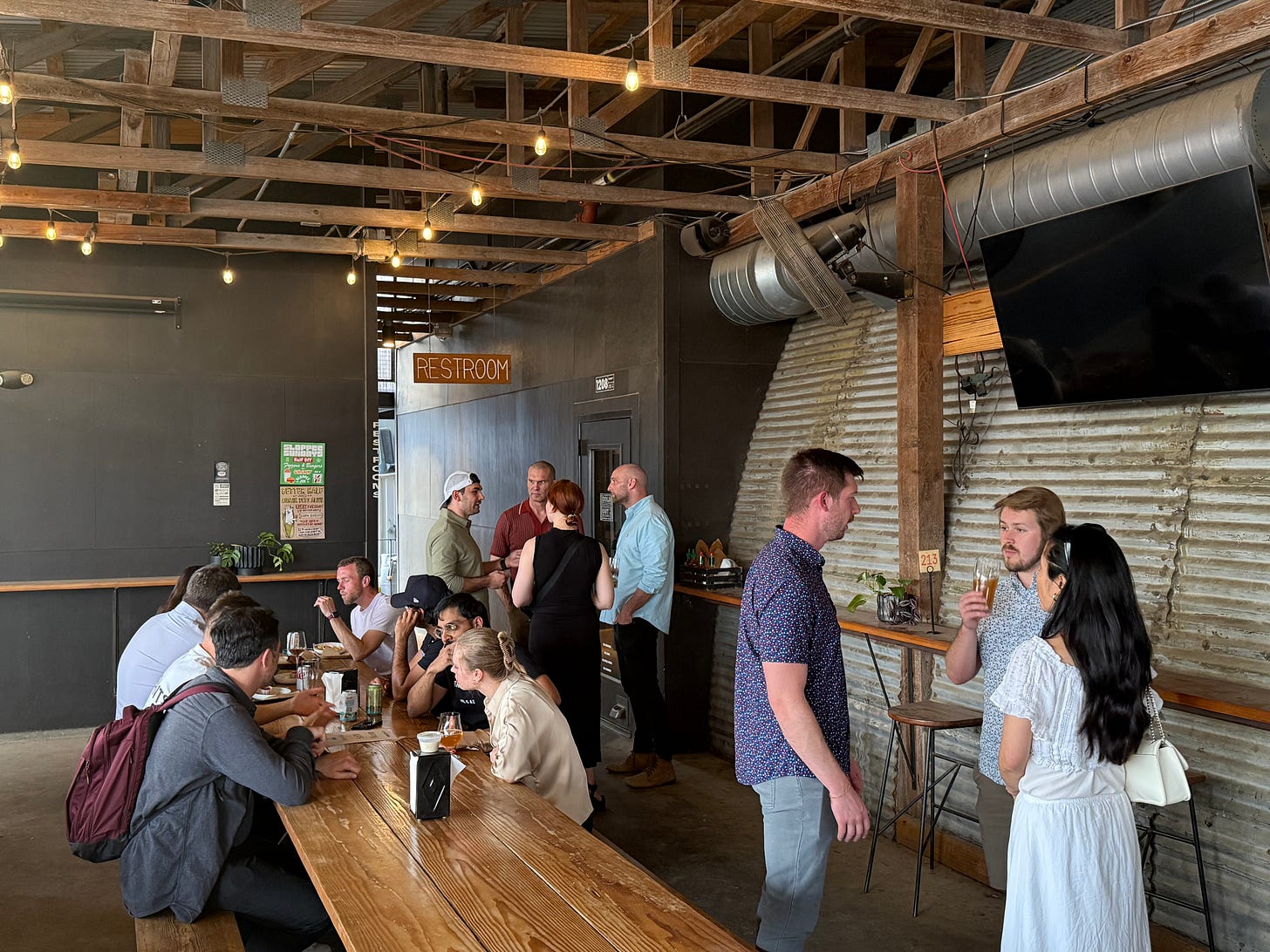
Austin's Bio Builders: We tapped into the network of local entrepreneurs and builders in Austin's tech scene. There weren't many bio-focused events at SxSW, which made me realize the talent density isn't quite there yet in Austin. I'm starting to think we shouldn't just focus on Austin but look at all of Texas as our TechBio region. We've got Pegasus Park in Dallas and MD Anderson in Houston - why not connect these other tech ecosystems with Austin's tech talent?
Third Places: Austin's breweries and patios are so much better for actual networking than event halls. Since I’ve had to start playing host, I've come to appreciate how Austin has these unique "third places" - they're spacious, have this cool outdoorsy vibe, and people seem to feel more comfortable introducing themselves to each other.
Statewide: Texas biotech is pretty fragmented between Austin, Dallas, and Houston. This creates challenges but also opportunities. If we think bigger - like regionally instead of just locally - we can play to each city's strengths: Austin's tech talent, Dallas's biotech infrastructure at places like Pegasus Park and its supposed emergence as “Y’all Street”, and Houston's medical institutions.
Closing Thoughts
If you build it, they will come: I've found that when you can't find the quality of events you'd like to attend, you have to create them yourself.
Conference Hack: If you dread going to conferences and struggle with networking, here's a trick: wear a t-shirt with your company's name on the front and put a meme on the back. It will help create inbound conversations.
Beyond AI and software: It's refreshing to learn about hard-tech and deep-tech companies. Software and AI get most of the attention and I’ve become desensitized to news in these sectors.
Hackathon Magic: It's amazing how much you can accomplish during a hackathon through "vibe-coding."
Special thanks to Sravya Varanasi for editing drafts of this article.






Hey man - great read - thanks for sharing!